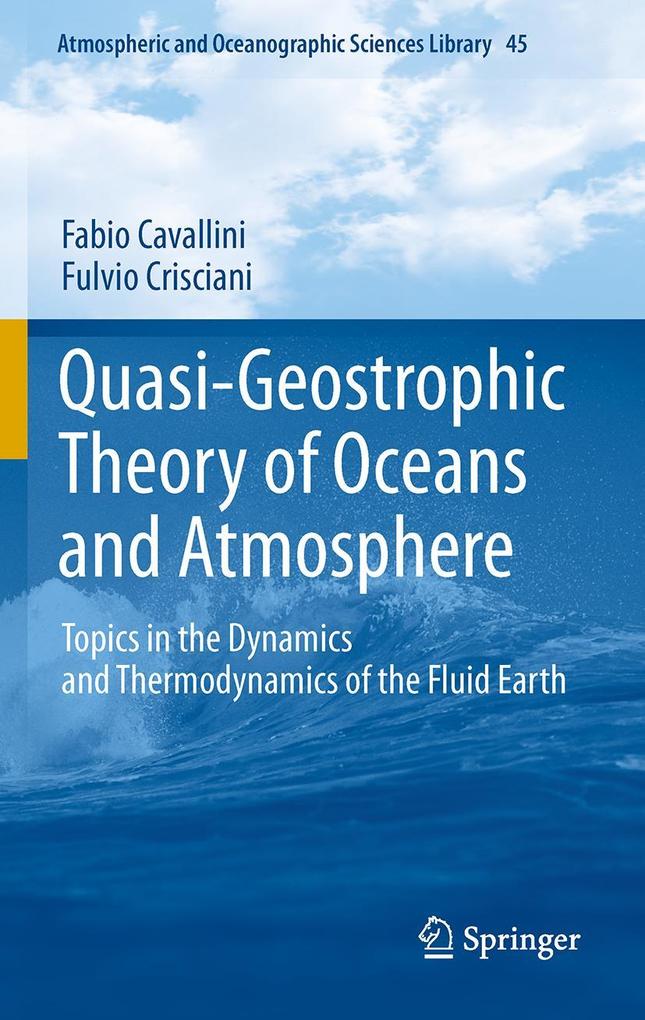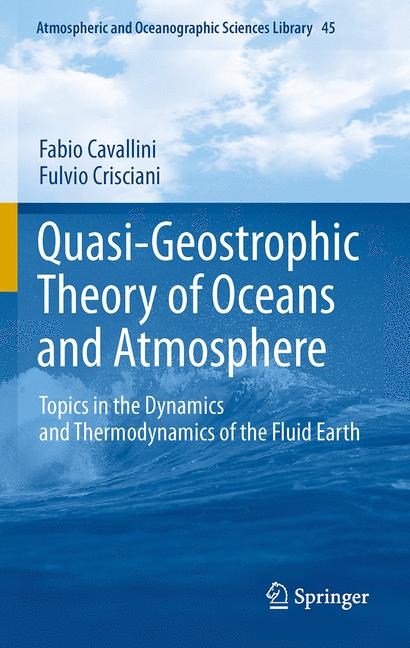
Zustellung: Mi, 23.07. - Sa, 26.07.
Versand in 7 Tagen
VersandkostenfreiThis book contains a detailed presentation of mathematical computations. It uses a main unifying technique (asymptotic expansion based on scale analysis) throughout the book to develop various applications.
Large-scale winds and currents tend to balance Coriolis and pressure gradient forces. The time evolution of these winds and currents is the subject of the quasi-geostrophic theory.
Chapter 1 presents concepts and equations of classical inertial fluid mechanics.
Chapter 2 deals with the equations of thermodynamics that close the governing equations of the fluids. Then, the motion is reformulated in a uniformly rotating reference frame.
Chapter 3 deals with the shallow-water model and the homogeneous model of wind-driven circulation. The chapter also describes a classical application of the Ekman layer to the atmosphere.
Chapter 4 considers the two-layer model, as an introduction to baroclinic flows, together with the concept of available potential energy.
Chapter 5 takes into account continuously stratified flows in the ocean and in the atmosphere.
Chapter 1 presents concepts and equations of classical inertial fluid mechanics.
Chapter 2 deals with the equations of thermodynamics that close the governing equations of the fluids. Then, the motion is reformulated in a uniformly rotating reference frame.
Chapter 3 deals with the shallow-water model and the homogeneous model of wind-driven circulation. The chapter also describes a classical application of the Ekman layer to the atmosphere.
Chapter 4 considers the two-layer model, as an introduction to baroclinic flows, together with the concept of available potential energy.
Chapter 5 takes into account continuously stratified flows in the ocean and in the atmosphere.
Inhaltsverzeichnis
Basic continuum Mechanics. - Kinematics of continua. - Dynamics of fluids. - Basic geophysical fluid dynamics. - Constitutive equations. - Internal gravity waves in adiabatic and frictionless fluids. - Rotating flows. - Large-scale flows. - Quasi-geostrophic single-layer models. - Shallow-water model. - Homogeneous model. - Quasi-geostrophic two-layer model. - Basic QG equations for the two-layer model. - Energetics of the two-layer model. - Quasi-geostrophic models of continuously stratified flows. - QG continuously stratified flows in the ocean. - QG continuously stratified flows in the atmosphere.
Produktdetails
Erscheinungsdatum
12. August 2012
Sprache
englisch
Auflage
2013
Seitenanzahl
400
Reihe
Atmospheric and Oceanographic Sciences Library
Autor/Autorin
Fabio Cavallini, Fulvio Crisciani
Verlag/Hersteller
Produktart
gebunden
Gewicht
764 g
Größe (L/B/H)
241/160/26 mm
ISBN
9789400746909
Entdecken Sie mehr
Bewertungen
0 Bewertungen
Es wurden noch keine Bewertungen abgegeben. Schreiben Sie die erste Bewertung zu "Quasi-Geostrophic Theory of Oceans and Atmosphere" und helfen Sie damit anderen bei der Kaufentscheidung.









